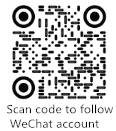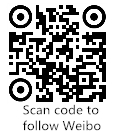By mapping biologically diverse organisms to create spatiotemporally resolved cell atlases, scientists are gaining unprecedented insights for rewriting phylogenetic trees.
In the 16th century Abraham Ortelius made one of the greatest contributions to the humanist era when he created the Theatrum Orbis Terrarum, or Theater of the World, the first world atlas.
The atlas was a book bringing maps of the world together in one format and with the same display, synthesizing all the latest knowledge related to the size and shape of the continents. Today, atlases have evolved to include facts about countries, such as population statistics, the location of natural resources, cultural and religious information, and political data. They are in essence a guide to our present world.
Now, through SpatialTemporal Omics (STOmics) and BGI Group’s Stereo-seq spatial multi-omics technology—Stereo-seq, mankind’s understanding of the world is being transformed again with the creation of cell atlases that enable scientists to catalogue all cell types and sub-types in organisms. These cellular atlases map cell types to their location within tissues and within the organism and examine their structure. The atlases also identify cell states, and can trace the developmental trajectory of cells, for example from a predecessor stem cell in bone marrow to a functional red blood cell.
Spatiotemporally resolved cellular atlases of diverse organisms will also help scientists understand evolution better. The full biodiversity in the world today evolved from earlier ancestors in a massive phylogenetic tree that shows the evolutionary relationships among various biological species stretching back billions of years.
Incomplete lineage sorting and phenotypic evolution is not uncommon. DNA data and morphological characters often show conflicting results when inferring the phylogeny. STOmics has the power to help us study phylogenetic trees through the lens of cell theory to see if the tree has been constructed accurately, whether some of the branches are in the wrong place, or whether the tree needs to be completely redrawn.
Two examples of major studies that are benefiting from the latest developments in sequencing technology are the Earth BioGenome Project and the Human Cell Atlas Project. The Earth BioGenome Project aims to sequence, catalogue and characterize the genomes of all the Earth’s eukaryotic biodiversity to help us better understand and harness biodiversity. And the Human Cell Atlas Project aims to map all human cells, enabling us to expand our understanding of human health and disease diagnosis, monitoring, and treatment.
When Ortelius created the world’s first atlas he not only relied on his own findings, but also on those of his peers and predecessors. He gained access to knowledge about the Asian inland based on Marco Polo’s travel reports from the 13th century and similarly learned about the Pacific Ocean and the New World thanks to the discoveries of the Spanish. Ortelius’ atlas was, therefore, the product of a collaborative endeavor.
Similarly, cell atlases cannot be devised without the collaboration of the international scientific community, particularly when multicellular organisms may be comprised of hundreds of trillions of cells. Experts from many different disciplines, including biology, medicine, and genomics, must work together to produce and understand this vital global scientific resource. This is why the SpatioTemporal Omics Consortium (STOC) was formed. STOC is a collaborative research initiative that brings together scientists from more than 30 countries to accelerate understanding of cellular complexity and interactions through large-scale spatially resolved multi-omics analyses.





